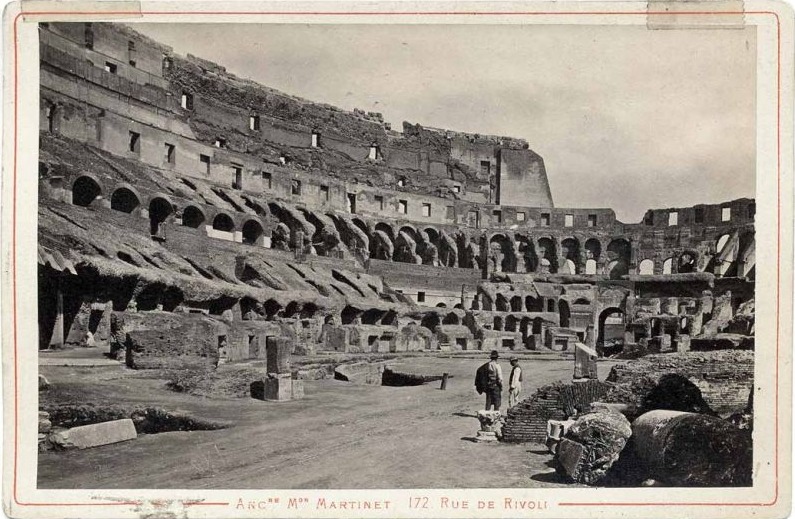Sports stadiums have served as gathering places for sports events for thousands of years. These are venues where spectators admired the athletic accomplishments of their countrymen. The sports stadiums we have today are modern and high-tech ones, but most of their architectures still stood true to their ancient roots.
If you admire the modern stadiums we have today, then you will also love the ancient stadiums that were built many years ago. It is where the architectural inspirations of most modern stadiums came from. To learn more, here are some of the great ancient stadiums and venues.
1. The Colosseum
The Colosseum was completed in 80 AD under the Roman emperor Titus. It’s a three-tiered stadium that stood 157 feet tall. It featured 80 entrances and have seated around fifty thousand people. This stadium is considered to be one of the greatest works of Roman architecture and engineering.
Back in the ancient times, gladiatorial combat, animal hunts, and simulated naval battles were held in the Colosseum. In 240 AD, during a seven-day festival, there were 2,000 gladiators and hundreds of animals that died in this stadium.
The Colosseum was closed in 523 AD. During that time, an estimated number of more than a million animals and more than five hundred thousand people have died there.
2. The Circus Maximus
The Circus Maximus is the largest stadium in ancient Rome. It stood 2,000 feet long, stretched 500 feet wide, and could seat 250,000 people.
In the ancient times, the sport played in this stadium was chariot racing. It was able to hold 12 chariots that raced a distance of four miles. These races were held here for almost a thousand years until 549 AD.
In the present time, this stadium is being used as a public park in the center of the city.
3. The Great Ballcourt of Chichen Itza
This is the largest ballcourt in Mesoamerica. It measures 545 feet long and 225 feet wide. However, the exact games or rules of ball games that were played in this stadium remains a mystery. But the carved panels that can be found here can indicate that athletes wore protective paddings and were divided into two teams of 11 or 12. There’s also a central panel at the stadium that depicts what appears to be the winning team’s captain decapitating the losing captain.
4. Stadium at Olympia
This ancient stadium is located in southern Greece. It hosted both the Olympic games dedicated to their god Zeus and goddess Hera.
The whole stadium was completed in the 5th century BCE. It was surrounded by artificial banks that could accommodate around 45,000 audiences. It has a 697-foot racetrack, as well as stone benches were the judges seated. It also featured a vaulted entrance for the athletes and on the north bank, there was an alter for the goddess Demeter who was the only woman allowed to watch the Olympic games.
5. Panathenaic Stadium
This stadium was built in Athens in 330 BC. It is able to hold about 50,000 spectators. The Panathenaic Stadium is the only stadium in the world that is made of marble. It’s a durable stadium because it has been in use for two millennia including some events in the 2004 Olympics.
6. Amphitheater of Pompeii
This is the oldest surviving Roman amphitheater and it’s located in the ancient Roman city of Pompeii. It was built around 70 BC and was the earliest Roman amphitheater that was built of stone before the Colosseum.
In the ancient times, gladiatorial contests were held in this stadium. In 59 AD, a deadly fight occurred between Pompeiians and the residents of Nuceria during the games in this amphitheater. It resulted in a 10-year ban on such events.
In the present time, the place is being used as venues for concerts and other public events.
7. Stadium of Domitian
This stadium was also called Circus Agonalis and it was located in Rome, Italy. It was built around 80 AD by Emperor Titus Flavius Domitianus as a gift for the Romans. This stadium was used for athletic contests.
When the Colosseum was damaged by fire in 217 AD, the gladiator events were held in this stadium.
8. Stadium of Delphi
This stadium is located on the highest spot of the Archaeological Site of Delphi. It was built in the 4th century BC and measured 178 meters in length. It is the best preserved ancient stadium in Greece. It was able to hold about 6,500 spectators.
The Stadium of Delphi held sports events such as gymnastics and track and field. Aside from that, it was also a venue for musical contests.
Ancient sport stadiums are symbols of pride and achievement for their communities. They have become cultural and architectural icons of the civilizations that built them. These stadiums stand as tributes to the memory of the players as well as their fans. They harbor the ghosts of outstanding triumphs as well as devastating defeats.

